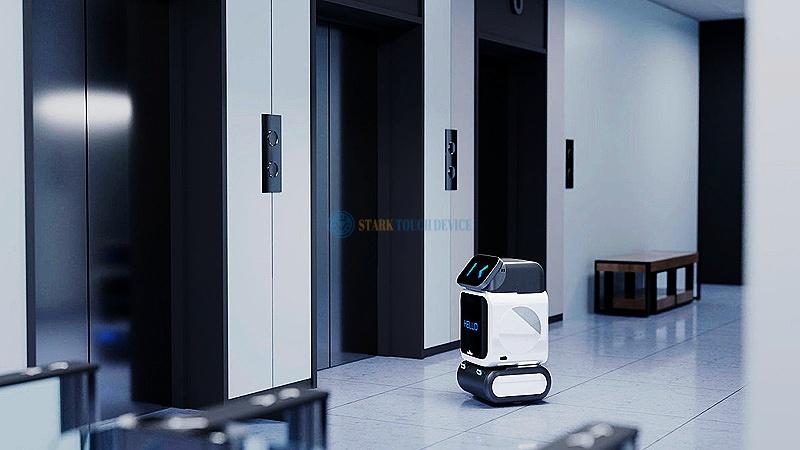Welcome STARK TOUCH DEVICE!
Artificial intelligence
Application of Industrial All-in-One PC in the Commercial Service Robotics Industry
Thanks to the transformative development and mature application of information technology, since 2010, industries centered on artificial intelligence (AI) have made significant breakthroughs, achieving varying degrees of application trials and demand upgrades across innovative scenarios such as smart factories, autonomous driving, intelligent diagnosis and treatment, smart education, and intelligent commercial services. As the most intuitive technological carrier and functional demonstration of AI, intelligent robots have gradually established a top-level strategic position in the global Fourth Industrial Revolution.
In the past two years, influenced by social issues like population aging and declining growth rates, rising labor costs, and the pandemic, the market's demand for robots to replace or assist humans in work and provide "zero-contact" services has intensified. Simultaneously, technological advancements have enabled service robots to realize various innovative functions and practical applications, highlighting their value in fields like catering, hospitality, retail, and office buildings.
Driven by the combined forces of "policy + economy + labor + commerce," the commercial service robotics industry boasts promising development prospects for the next five years.

Amidst this thriving industry, how do our industrial all-in-one computers (AIOs) fulfill demanding applications in robotic devices?
While current service robots vary in functionality, their core components primarily focus on three categories: human-machine interaction, environmental perception, and motion control.
Taking our smart industrial AIO as an example, its primary structure comprises a display, a control motherboard, functional hardware, and an operating system. As an independent core control module and interactive interface, the AIO's display module provides commercial service robots with a "face-to-face" customer service experience, undertaking upper-level application functions like information display, touch operation, and human-machine interaction. Capable of supporting HDMI 8K ultra-high-definition display, this AIO features a responsive 10-point capacitive touchscreen. Through expanded connections with cameras, speakers, microphones, and the motherboard, along with customized system software, it enables innovative applications in face recognition, voice interaction, and touchscreen consultations. Common applications include guide robots and multimedia robots in various commercial complexes, office buildings, exhibition halls, and museums, enhancing service efficiency and experience while reducing costs.

In terms of environmental perception and motion control, this industrial AIO offers high-quality and reliable underlying hardware support. By integrating hardware modules like networks (WiFi/4G/5G), image sensors, GPS, and infrared sensors, it fulfills functional requirements such as precise positioning, navigation, path control, and dynamic obstacle avoidance for service robots.

Our AIO's high degree of integration allows for flexible additions and subtractions of various modules. Through deep integration with AI technology, we can create personalized commercial service robots with diverse functions, expanding the imagination for end-user applications. The industrial-grade quality of our AIOs effectively ensures the normal operation of robots in harsh environments, guaranteeing 7*24H uninterrupted stability, effectively replacing human labor and significantly reducing time and labor costs.

The vigorous development of service robots is an inevitable trend in the future technological revolution. Our industrial AIOs, with their innovative technology and flexible customization advantages, offer a rich and diverse selection for AI robot applications and have already achieved widespread adoption in the AI field. Clients can find the most suitable product application solutions based on different scenarios and functional requirements.


